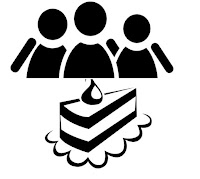Knock-out!
I sit here in disbelief that I have completed my first unit plan.
I would love to say that this was a simple task; however, I can admit that I struggled to knock it out.
Below I have highlighted my efforts and struggles I went through to knock-out my fist unit plan!
Round One: Be Purposeful
I want to be purposeful in the way that I fulfilled expectations beyond the essential elements of a unit plan. I challenged myself in creating a unit plan on a subject I was familiar with because I knew the impact and purpose of learning about the dairy industry in Pennsylvania. However, this intent to be purposeful in sharing about an industry I am passionate about created stress. I wanted my students to see the passion and importance, but how could I do that in an introduction course? And better yet, only for 42 minutes for 15 days!?! This tasked me with condensing my knowledge and industry content together with hopes of creating a successful and purposeful unit for 12 ninth graders.
Round Two: Get Specific
Some people describe me as a detail-oriented individual, but in all honesty I do not enjoy thinking about details. Thinking requires a lot of brain power and focus, two things that are hard to acquire when you have the urge of senioritis. Therefore, I really don't like details, but I know details are essential to the success of my unit and lesson plans! In my unit plan I knew I was leaving out some of the details just because I do not want to challenge my brain and focus. Yet, I didn't realize how crucial these details are until further class discussion. I realized that my unit plans are not just to guide me, but they will help my students and my cooperating teacher while I am student teaching. Overall, I need to use brain power to focus on details as far as materials, objectives, adaptations and FFA/SAE integration.
Round Three: Receive and Believe in Positive Critical Feedback
I have always believed that positive and critical feedback is crucial to growth in skills; however, I have not figured out how to interpret critical feedback. I get offended and take things personally too easily. I try to be perfectionist and let this create a roadblock when someone would tell me that my work is not perfect, which caused me to get defensive. Also, I do not give myself the appropriate 24 hours of reflective period, I act immediately and do not give myself time to breath and reflect. I am realizing the need for critical feedback because I need to grow some skill sets to improve my unit plans in the future.
Again, I was presented with challenges and got knocked down a few times. However, I am now more determined to grow from this round and knock-out more successful and purposeful unit plans.
"It's not whether you get knocked down, it's whether you get up." -Vince Lombardi






